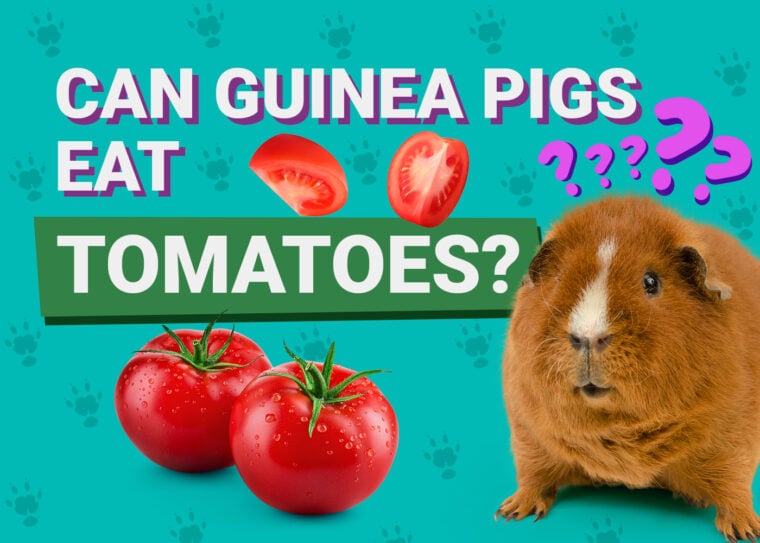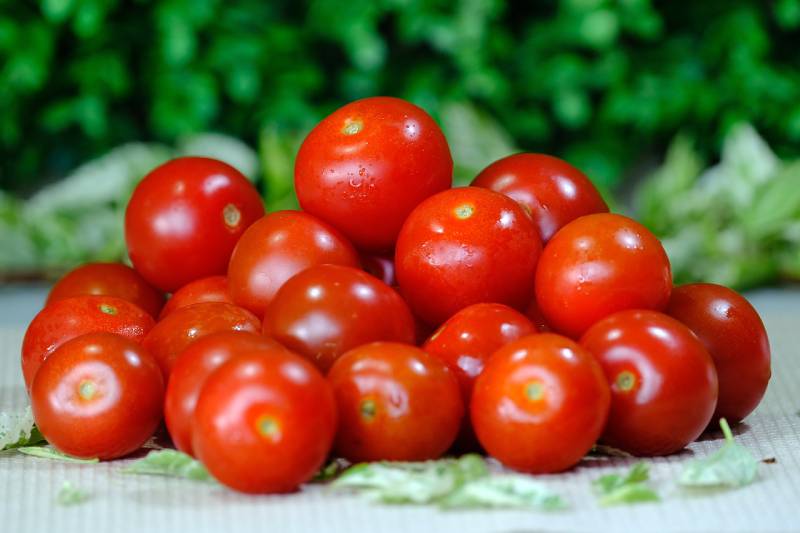
Click to Skip Ahead
Guinea pigs can safely eat various fruits and vegetables. As a loving pet owner, you probably enjoy feeding your guinea pig a diverse array of foods and treats whenever possible. For many people, tomatoes make tasty toppings for burgers and salads or can even be eaten whole. The good news is that guinea pigs can safely eat ripe tomatoes. So, if your guinea pig is eyeing your tomatoes hungrily, you can give them a piece, but not too much.

How Much Tomato Can I Feed My Guinea Pig?
Tomatoes are safe for guinea pigs and even beneficial in small amounts. But if you feed too many to your furry friend, it can have the reverse effect. The overconsumption of tomatoes can lead to lip sores and diarrhea in your cavy.
One cherry tomato is about the right size for a serving of tomato for a guinea pig (though you should still cut it into smaller pieces). If you’re feeding them part of a regular tomato, you want a chunk that’s about 1 inch all around.

How Often Can a Guinea Pig Eat Tomato?
Although tomatoes are great for guinea pigs in small amounts as treats, they’re not ideal for daily snacking. Instead, you’d be better off giving them to your guinea pig once a week, or possibly once every other week as part of a rotation of several fruits. Fruits being offered as a very small fraction of the total food composition of your guinea pig remains the best rule to stick to.

What Kinds of Tomatoes Can Guinea Pigs Eat?
All kinds of tomato you are eating is perfectly safe to share with your guinea pig. The key is to make sure the tomato is completely ripe. You should not give your guinea pig a tomato that’s not completely ripe.
Is It Safe for a Guinea Pig to Eat All Parts of a Tomato?
The only part of the tomato that’s safe for a guinea pig to eat is the fully ripened red flesh of the fruit. You don’t want to feed your guinea pig anything green: no leaves, stems, or unripe tomatoes.
The green parts of the tomato plant are full of tomatine, a glycoalkaloid compound which is considered a toxin in high amounts. The effects of tomatine on guinea pigs haven’t been thoroughly investigated or researched. However, it is better to play it safe and not offer your pet parts of a plant that might be harmful for them because it isn’t worth the risk. Under controlled experimental conditions, it seems to exert a similar toxic effect as solanine, a compound found primarily in potatoes 1.
Fortunately, tomatine drastically reduces in the ripened tomato fruit, so it’s safe to feed to your cavy. But if it’s not fully ripe and still has a bit of green left in it, you don’t want to risk feeding it to your pet. Also, be sure to clip those leaves off the top!

Are Tomatoes Beneficial to Guinea Pigs?
So far, we’ve focused mainly on the negative aspects of feeding tomatoes to your guinea pig because that’s what you need to know to keep your beloved pet safe. But does eating tomatoes have any benefits for your tiny furry friend?
Unfortunately, tomatoes don’t offer much in terms of health benefits. Granted, they do contain water, moderate amounts of vitamin C, and other minerals and vitamins, but these benefits aren’t unique to tomatoes and can be found (often in better quantities) in other fruits as well.
The presence of sugar and the acidic profile of tomatoes further pulls from their appeal, and for this reason, vegetables remain vastly superior to fruits for your guinea pig’s health.

What Negative Effects Can Result If I Feed My Guinea Pig Too Many Tomatoes?
The negative effects of tomatoes easily outweigh the benefits.

Final Thoughts
If you want to feed your cavy a wide array of tasty foods, a small piece of a tomato is an option to consider, though better options exist.
But be careful not to overdo it, and don’t feed any green parts of the tomato plant to your guinea pig. The stems, leaves, and unripe fruit all contain tomatine, which may be detrimental to their health. So, as the old adage goes: All (ripe) things in moderation.








